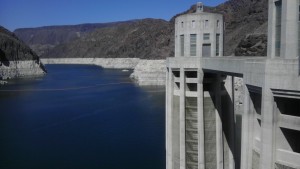The inevitable is upon us. Channeling Hydrowonk’s favorite Chicagoan theologian, “the curtailments have come home to roost.”
Many are not surprised. The early 20th century was a period of historically high natural flows on the Colorado River when the 1922 Colorado River Compact was negotiated. The 1944 Treaty with the Republic of Mexico was, at least partly, a national security exercise during World War II against Nazi incursion south of our border. Were interested parties inside and outside state and federal governments engaged in long-term comprehensive risk assessment over the past seventy years? Based on Hydrowonk’s four decades plus experience, nope (with a few exceptions). Neglect is always a prelude to catastrophe.

